Dayanita Singh’s love of making posters brought us together more than a decade ago. She was by then a well-known artist, I, a young designer. We collaborated several times and, one year, we found ourselves sharing the Günter Grass apartment at Steidlville in Germany, working on her book. A tiny, imperceptible friendship formed. Back in Delhi, we met over teas in our studios; we talked about books, music, art and the nature of friendships. I spent months living and working in her home in Goa, where I often felt as though I were inhabiting a work of her’s. Each time we met in my own home, Dayanita would first re-frame our conversation space: the furniture would be moved around and the lights adjusted to her satisfaction. Excerpts from a conversation we recorded on a warm Goan winter day. — RGT
Do you often get asked the “why black-and-white?” question?
Even after all these years, it’s the question that’s asked at the end of every public talk. There are two things here: I think the burden of photography is reality. Because photography is the light reflected off the surface of something, which is then captured by the camera. So, it is replicating. But I am not so interested in presenting just the reality that the camera sees. Anyway one can question how much reality there is because we put a frame around it and change the angle or the light and all that is changing…
…you are editing constantly as you are creating an image.
Yes. But I am interested in photography when it can be something else. It can be about that chair but it has to evoke something else which is closer to, perhaps, the poetics: can there be a heightened state when you can hear the music from a chair? But let’s not go there… Can one at least feel something else about that chair rather than its just being a chair? Because of the abstraction required to do that, I work with black-and-white. I am not interested in projecting that which is anyway there.
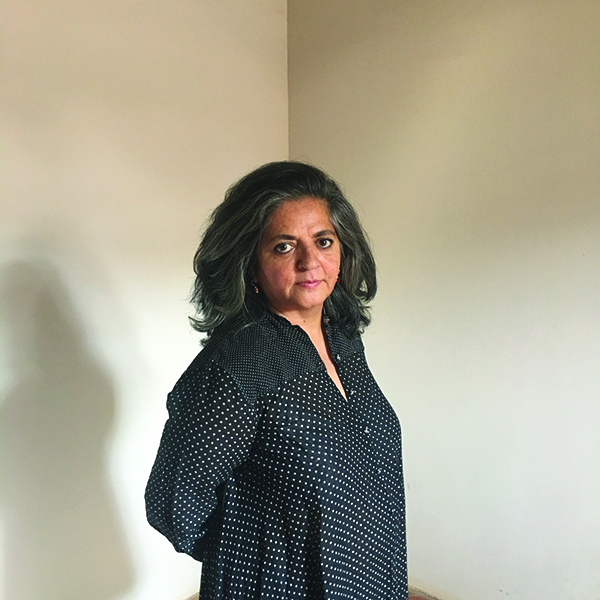
What you mean is that black-and-white takes us a step towards abstraction.
Absolutely. I work with colour too. But I only work with colour when it’s doing something else. So Blue Book could have had regular industrial images, but because they were in the blue palette, which was an accident…
So, the blue, rather than regular colour, lent them abstraction.
Of course. You don’t see blue like that. It was the failing of daylight film that produced the blue which gave me that quality of “something else”.
So it was an accident that delighted you.
This is the great thing about analogue photography. In digital it doesn’t happen because you immediately see if you are making a mistake, no? I was shooting in colour film thinking I’ll convert it to black-and-white later because I had run out of black-and-white film…
I was on top of that tall tower in Hindalco. It was sunset and I had run out of film but I had some old colour film in my bag. I was in a brace and I didn’t have the guts to go down again. So I continued shooting in colour and sent the film off to Lakshman [the owner of a film processing shop in Delhi]. He sent me the contact sheets. They were all blue. I called Lakshman and asked, “What have you done?” He said, “You always tell us to do normal processing so we’ve done normal processing.” I said, “But this is an abnormal blue!” Then I did some research and realised that if you use daylight film after sunset, it goes blue. So the advantage I have I suppose is that because I work with this medium I think about it constantly and I thought, this is the colour I’ve been waiting for. This was the first time I’d worked with colour because I could see that it was doing “something else” and then that led to Dream Villa and House of Love.
The burden of reality was being dealt with.
Exactly. And Dream Villa was even more successful in a way. They were all night pictures. I was obsessed with photographing, like a robber. I used to have these headlights with different colours that I’d point with my head and then photograph. The rest was all black and the night takes away the context.
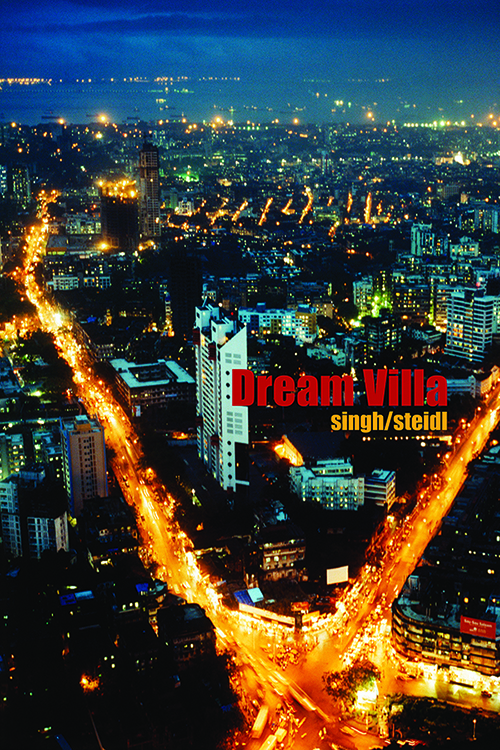
The night abstracts because nothing seems like what it is.
Yes. So black-and-white allows me that “something else”. Colour in some strange situations does that too. Having said that, when I am in Europe and the colours around me are very muted, I start thinking about colour. But then I am only interested in colour if it’s almost white, or if it’s like black-and-white.
When the colour has leached out?
Or when the scene is like right now. If you look around, there’s very little colour and even though the red bowl gives it away, you could shoot it in a way that looks black-and-white.
That brings me to the next thing: when I look around your house, when you talk about the ashram you have photographed, and when I see your images, I see a certain austerity. Is the aesthetic of austerity black-and-white?
Thank you for bringing that up. I like how black-and-white can pare things down to an extent where it’s no longer about the colour. So that red stained glass there would become the focus of an image. But in black-and-white you wouldn’t even notice it so it makes it more austere. The danger is that it can make it more graphic. You have to be careful about that.
You mean high contrast reducing things to just geometry.
Yes. So, when I pare down what is in the image I am paring down what I have in mind, and your mind as the reader. I can get you to focus on the personality of that chair so much more in black-and-white. So the work I am doing now, which is based on architecture, is so spare that it shocks even me. I am not quite sure what’s happening there but it’s connected to my “Museum of Shedding” and the glass bowls you have seen in my house. I want a simpler way of living. I want less clutter, more focus. I find anything on the wall, however exquisite, a distraction. I love this room, which has nothing on the walls. You are very right to bring in how I live because it is beginning to seep into my work and you’ll see it in the newer series I am doing.
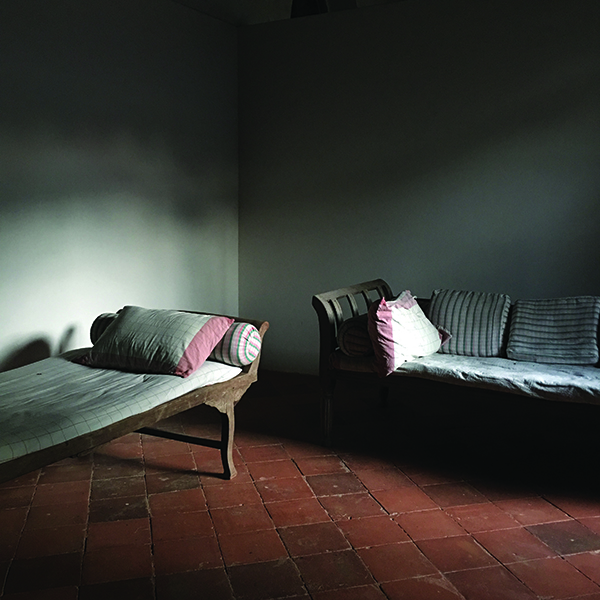
I feel it has always been there. Having frequented your home in Delhi, having lived in your home in Goa and having gone through so many of your images over the years, I feel the three have always been very connected.
You know, sometimes I feel like I have taken this picture—of what I am seeing from where I am sitting now—but I haven’t taken it. I’ve hardly photographed this house. But I got a house that looks like my pictures. I don’t even know what the word for that is. It’s like a reverse déjà-vu.
And the house is leached of colour even though there is colour. It’s the austerity of black-and-white.
You’ve seen what I call the “PhD room”—which has the bed, desk, bathing area and seating by the window.
The monkish room...
Yes. So that idea is becoming very interesting. And in my work, I can tell the overriding strain is of paring down the image.
So you think you are paring them down even further when they are already very spare?
But now I have to reduce them even more. It’s almost as if they might finally be blank. I don’t know where that’s coming from but I have realised after all these years, one has to trust the muse implicitly. It doesn’t seem artificial, so I try not to judge it too much.
What I will do next year will make it all clearer. I am not sure how long photography will serve for me. Because it is a reflection of what is in front.
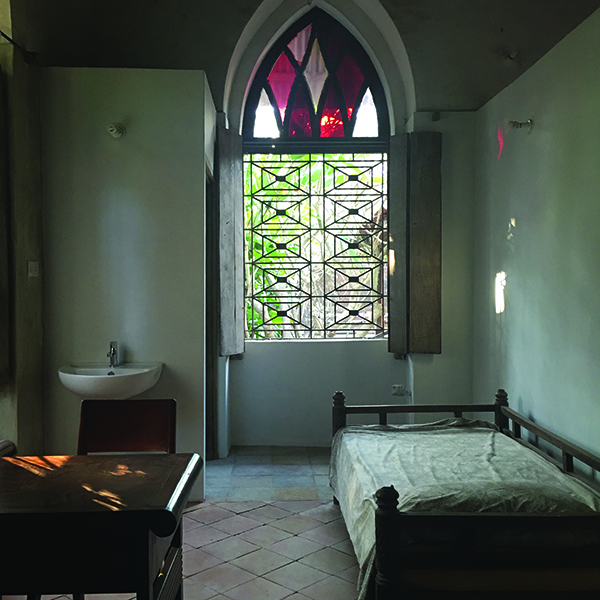
But it’s also how you see things.
Yes, one is drawn to different things. While doing yoga, Samara [Singh’s yoga teacher] was telling me how drishti is very important in yoga. She said it’s where you place your gaze. And I said, “But that’s photography.”
Can you talk about black-and-white and the book? In musical terms, is the blank page the “khali”?
I think both in making books and in my work, my influences come from spending time with musicians. The khali has informed so much of my work. It’s not just what you sing but the silence between two notes. For me this was a huge learning: that the quiet has as much power as the sound. This chair has a lot of sound but it’s too busy behind it and I have to shoot from the other side to add some quiet around it. If we think of how one constructs a book—in that space between taking photos and till one goes to the designer—it’s like an alap. I try to work on what the notes of this raga are going to be before I start working with the designer. I need to first find the tone and the pitch. That’s why I go to pieces of music. I edited Go Away Closer using Mahler’s first symphony, second movement.
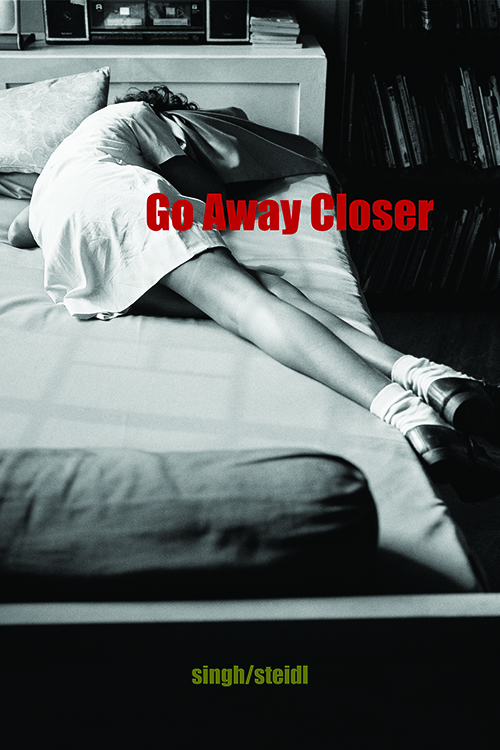
Indian classical music illustrates this beautifully. You have a raga: a skeleton. It tells you, that in Yaman, these are the notes you use and then it’s up to you how you add the body to it and dress it up.
Exactly! And the alap part is just about playing with the skeleton; exploring the notes. So between making the images and going to the designer, there needs to be a drawn-out alap. What I have learnt to do is listen to my images. When I lay out all the prints, I try to get as far away from context as possible. It helps to go to images after years. I can’t shoot and edit images immediately. It’s a disaster. Now I am editing what I shot in 2015–16. That’s the only way to get distance from your work, no?
Yes, one is always too close to the just-made work. When I am working with books, the deadline is always imminent and when I look at the work after a few months, almost always, there are things I’d change; just small niggling things.
Exactly! And those could be the key things that make all the difference!
But you can’t see them immediately.
I find shifting location helps a lot. So with the work I am talking about: I had done my edit and I had about 150 small prints made. But I came here and suddenly I said, no, I need other notes here. This is not enough. I needed another edit and Gaurav [Singh’s computer assistant] said, “You want me to make you another 120 small prints?” I said, “Yes, and we might even cut them down to 30!” That’s a question of courage and confidence, no? That comes with time and rigour. That’s a difficult quality to try and teach to somebody.
That’s riyaz.
We must talk about riyaz and we must talk about “tayyari”. Nothing is more crucial than riyaz. You may have all the talent in the world, but if you get away from it, it’s very hard to come back. But let’s also talk about tayyari. I have been privileged to spend so much time with Zakir [Hussain]. Classical musicians have this wonderful thing called the chilla. It’s part of the tayyari. You are put inside a room for 40 days (my PhD room comes from that). You are made to sit there with your tablas. You sleep for a few hours, your guru is outside and life continues like normal. If you are playing something wrong, your guru tells you. You are given food twice a day and you leave your plate out when you are done. That’s it. That’s all you do. I am, in a way, brought up with that kind of rigour. I now think my training with the musicians was my tayyari to be open. I may be stretching it here but I think it comes from the music. I don’t know where else it could come from.
It’s a great privilege to have this photo conversation with someone who is very familiar with Hindustani classical music because we have so many new metaphors: tayyari, riyaz, khaali, alap…
And chilla…
…which was in a way my tayyari.
Is that what you do? Spend a lot of time alone just by yourself, with your work, every single day?
Absolutely. In Delhi, I don’t have to engage with anybody. I can go down to my apartment just to sleep and when I wake up, I go back to the edit. In Goa I have these lovely long tables and I have edits going on several tables. Now that I have such a lot of editing to do, I am moving two tables to the gallery room so that I can edit.
Are all the people in the house adding colour to the edit?
No, this has to be a very solitary thing. Nobody can be here at that time.
So you are not working right now.
No. I am doing whatever I can with my books, making notes but I am not doing any editing. So I think both in your work and in mine, it can be very interesting to try and understand the influence of a training: in my case just listening and being around Hindustani classical music and if that music was not there in our lives, I think we’d be quite different in the way we work. I think we can explore what it is we can get out of classical music. After all, we’ve both had a great design training as well. I’ve begun to feel I couldn’t do half of what I do if I hadn’t been to NID.
I learnt classical music only briefly but it was very evident that without riyaz, one was not getting anywhere. It’s not just about achieving technical perfection but about finding meaning. When an artist is able to convey that meaning, there’s that heart-stopping moment.
Then maybe one can say, that to excel at something, nothing one does is good enough. Even today, at 66, I’m sure Zakir would say, there’s so much more to learn. In these ways classical music puts you in your place. I can never take what I do so seriously as I know there’s a lot more to do. I am not comparing myself to Zakir but, tell me, who’ll challenge Zakir? He’ll have to challenge himself. When I was showing at the Venice Biennale for the first time, he was on the Venice Film Festival jury. He went and saw my work and sent me a message saying, “So proud of you.” I said, “See Zakir, I am also a big star now.” You know, I was always the kid and he was the star. And he said, sweetheart, I hope you don’t take that seriously because the day you do, will be the day you call it quits… when you start to believe you’ve done something. And that was a very good time to have got that message from him because I was on that…
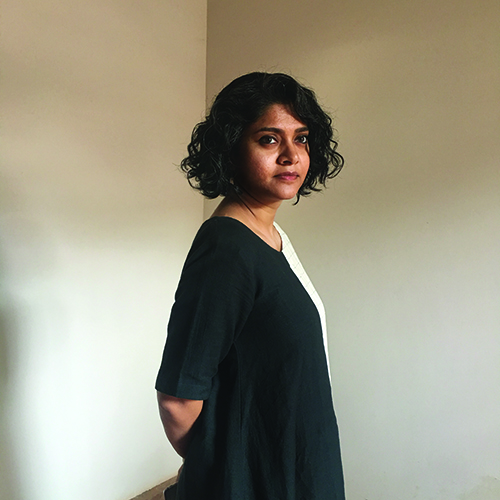
High?
Yes. So now Pocket Museum is over and I am back to zero and I have to start again. It doesn’t matter how good it was. It only matters that I have to push further. So could one say that this is something that comes more from a classical music training?
I can understand that, as much of my own understanding of a “practice” comes through music.
For me it’s important to be able to have this conversation. The only person so far that I’ve been able to have this conversation with is TM Krishna. So I call him my “gurubhai” because we both understand that you have to know your medium inside out and only then can you challenge it.
TMK made that comment about File Room… I had just heard his music for 50 hours… I wanted to meet him… And then I went to Chennai and did the book release with him. He said, people call her a black-and-white photographer but her work is all in the greys. I was so impressed by that. When we talk about black-and-white, it’s true that my work is anything but black-and-white. It’s all about
the greys.
***
Rukminee Guha Thakurta is a graphic designer and visiting faculty at the National Institute of Design. Her design studio is called Letterpress. She dabbles in music, writing and curation. This interview was first published in The Indian Quarterly.

